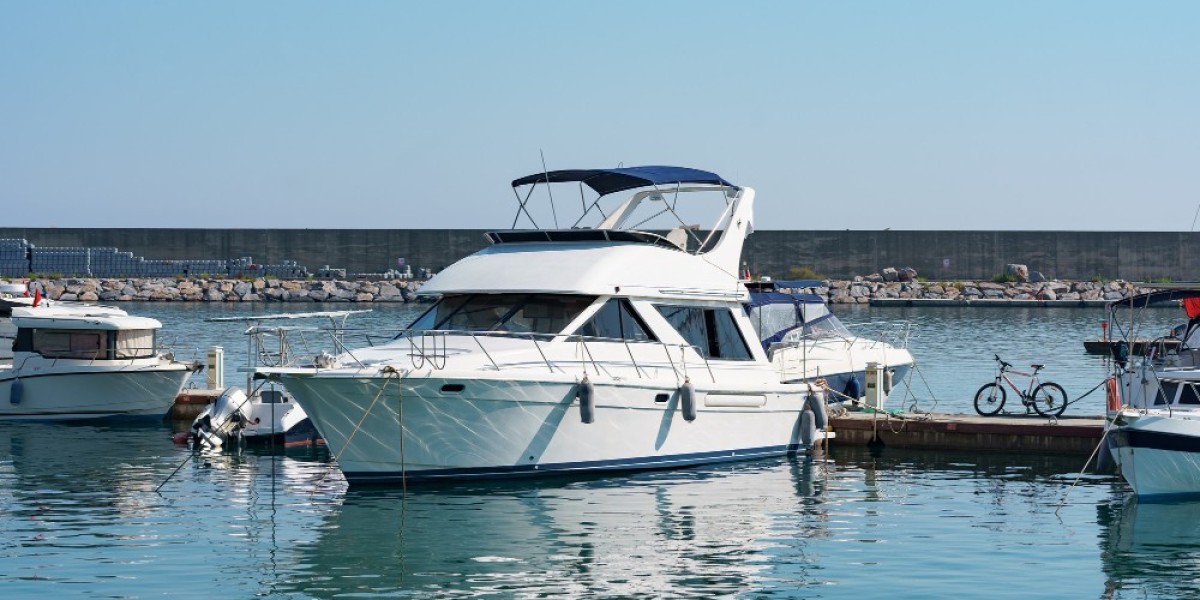Boats are amazing machines that provide both recreational and practical means of transport across waterways. Whether you’re sailing on a lake, navigating the open sea, or enjoying a weekend of fishing, a reliable boat engine is essential to get you where you need to go. Understanding how boat engines work, the different types available, and how to maintain them is crucial for any boat owner.
In this blog, we’ll explore the key aspects of boat engine, the types of engines used on boats, and provide tips on choosing the right engine for your vessel.
What is a Boat Engine?
A boat engine is the motor that powers a boat, providing the propulsion needed to move through the water. Boat engines work similarly to the engines in cars, but with modifications to handle the unique conditions of the water. They convert fuel into mechanical power, which is used to turn the propeller or drive system, ultimately pushing the boat forward.
The size, type, and configuration of the engine can vary based on the boat’s size, purpose, and the environment it will operate in.
Types of Boat Engines
Boat engines come in various types, each suited for different needs, boat sizes, and performance requirements. Here are the most common types of boat engines:
a) Inboard Engines
Inboard engines are located within the hull of the boat, typically beneath the deck. These engines are common in larger boats and are often used in yachts, motorboats, and commercial vessels.
- Advantages: Inboard engines are known for their power and durability. Since they are mounted inside the hull, they leave more deck space and are generally more stable. Additionally, the drive shaft is located inside the hull, which provides greater protection against damage.
- Disadvantages: Inboard engines can be more difficult to repair and maintain since they are built into the boat. They are also usually more expensive than outboard engines.
b) Outboard Engines
Outboard engines are mounted on the exterior of the boat, typically at the rear. They are common on smaller boats like fishing boats, dinghies, and recreational pontoons.
- Advantages: Outboard engines are easy to remove, making them easier to repair, replace, and maintain. They are typically more fuel-efficient than inboard engines and are more affordable upfront. Outboards also provide greater maneuverability and are perfect for smaller boats.
- Disadvantages: Outboard engines can be noisy, and because they’re exposed to the elements, they require regular maintenance to protect against corrosion.
c) Sterndrive Engines
A sterndrive engine is a hybrid between an inboard and an outboard engine. The engine is mounted inside the boat, but the drive system (propeller and lower unit) is located outside the boat, similar to an outboard.
- Advantages: Sterndrive engines offer good power and performance, similar to inboard engines, but with the added benefit of easier maintenance like an outboard engine. They also provide excellent fuel efficiency.
- Disadvantages: Sterndrive engines can be harder to repair due to their internal components, and the drive unit outside the boat can be vulnerable to damage when in shallow waters.
d) Electric Engines
As boats become more eco-friendly, electric engines are gaining popularity. These engines are powered by batteries and offer a quieter and more environmentally friendly alternative to traditional gas-powered engines.
- Advantages: Electric engines are quieter, require less maintenance, and don’t produce harmful emissions, making them a great choice for environmentally conscious boaters. They’re perfect for small vessels used in calm waters like lakes and rivers.
- Disadvantages: The range of electric boat engines can be limited, and they may not be powerful enough for larger boats or those used in rough waters.
Key Components of a Boat Engine
Boat engines are complex machines with several key components working together to produce power. Here are the main parts that make up a typical boat engine:
a) Engine Block
The engine block is the main part of the engine, housing the cylinders where the combustion process occurs. It is made from durable materials like cast iron or aluminum and is designed to withstand high levels of heat and pressure.
b) Cylinders and Pistons
The cylinders are where the fuel-air mixture is ignited to create power. Pistons move up and down in the cylinders, converting the energy from the combustion process into mechanical energy that turns the crankshaft.
c) Fuel System
The fuel system includes the fuel tank, fuel pump, carburetor (or fuel injection system), and fuel lines. The system ensures that the correct amount of fuel is delivered to the engine for combustion.
d) Ignition System
The ignition system includes components like the spark plugs and the distributor, which ignite the fuel-air mixture in the cylinders. A properly functioning ignition system is critical for starting the engine and maintaining consistent performance.
e) Cooling System
Boats rely on a cooling system to keep the engine from overheating. Most boat engines use water cooling, where water from the body of water the boat is on is drawn in, circulated through the engine, and expelled.
f) Exhaust System
The exhaust system directs the gases produced by the combustion process out of the engine. The system usually includes exhaust manifolds, pipes, and mufflers to ensure the safe release of gases and reduce noise.
g) Drive System (Propeller or Jet)
The drive system consists of the parts that transfer the power generated by the engine to the water. In propeller-driven boats, the drive system includes the propeller, shaft, and transmission. For jet boats, it involves the jet pump, which propels water backward to push the boat forward.
Choosing the Right Boat Engine
Choosing the right boat engine depends on several factors, including the type of boat, how you plan to use it, and your budget. Here are some things to consider when making your decision:
a) Boat Size
Larger boats usually require more powerful engines to handle their weight and ensure a smooth ride. Smaller boats, on the other hand, can be adequately powered by smaller engines.
b) Intended Use
The type of boating you plan to do will also influence your engine choice. If you're primarily using your boat for recreational cruising or fishing in calm waters, a smaller engine (or even an electric engine) might suffice. However, if you plan to use the boat for water sports or offshore travel, a more powerful engine is necessary.
c) Fuel Efficiency
If you're concerned about fuel costs, choosing a fuel-efficient engine can help keep your boating expenses down. Outboard engines, for example, tend to be more fuel-efficient than larger inboard engines.
d) Maintenance Needs
Some engines require more frequent maintenance than others. Outboard engines tend to be easier to maintain than inboard ones, while electric engines are the least maintenance-intensive of all.
Maintaining Your Boat Engine
Regular maintenance is crucial to ensuring your boat engine runs smoothly and efficiently. Here are some key maintenance tips:
- Change the oil: Just like a car, your boat engine needs regular oil changes to prevent internal damage and ensure proper lubrication.
- Check the fuel system: Make sure the fuel lines and filters are clean and free from blockages.
- Clean the cooling system: Regularly flush out the cooling system to prevent saltwater buildup, especially if you operate in saltwater environments.
- Inspect the spark plugs: Spark plugs wear out over time and need to be replaced to ensure a reliable start.
- Store the engine properly: If you’re not using your boat for an extended period, be sure to properly winterize the engine to avoid damage from cold weather or moisture.
Conclusion
Boat engines are the heart of your vessel, providing the power and performance you need to navigate waterways, whether you’re cruising, fishing, or enjoying water sports. With several engine types to choose from, understanding your needs and the engine options available will help you make an informed decision. Proper maintenance and care will keep your boat engine running smoothly for years, ensuring countless enjoyable moments on the water.



